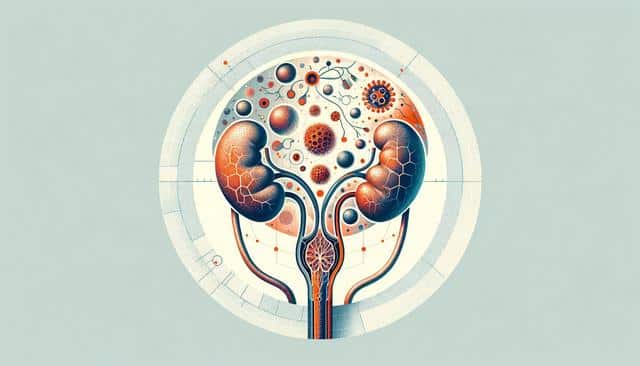Understanding the Warning Signs of Bladder Cancer
Bladder cancer symptoms often include blood in the urine (hematuria), which may be painless. Other signs can be frequent urination, painful urination, or urgent need to ur urinate. These symptoms warrant immediate medical evaluation, as early detection significantly improves treatment outcomes and prognosis.

What Is Bladder Cancer?
Bladder cancer occurs when abnormal cells grow uncontrollably in the bladder lining or deeper layers of the bladder wall. The bladder is a hollow organ in the lower abdomen that stores urine, and when cancer develops here, it can affect both urinary and overall health. While the majority of bladder cancers begin in the urothelial cells lining the bladder, they can become invasive if not detected early. Understanding this disease begins with recognizing its nature and the various types, such as non-muscle-invasive bladder cancer and muscle-invasive bladder cancer. Each type can affect treatment options and long-term outcomes differently.
Bladder cancer is more common in older adults and is diagnosed more frequently in men than women. However, it is important to note that anyone can develop this condition. Risk factors include smoking, prolonged exposure to industrial chemicals, chronic bladder inflammation, and a history of bladder infections. Genetic predisposition may also play a role, especially for those with a family history of the disease.
Early Symptoms to Watch For
Recognizing early symptoms of bladder cancer can lead to timely diagnosis and effective management. While some symptoms may seem minor or be mistaken for other conditions, they should not be ignored, especially if they persist. The most common early symptom is visible or microscopic blood in the urine, which often appears without pain. This condition is known as hematuria and is frequently the first noticeable sign.
Other early symptoms include:
- Frequent urination without an increase in fluid intake
- An urgent need to urinate, even when the bladder isn’t full
- Pain or burning sensation during urination
- Lower back pain, typically localized to one side
Because these symptoms can resemble those of urinary tract infections or kidney stones, it’s important to consult a healthcare provider for proper testing and diagnosis. Ignoring these signs can delay treatment and allow the cancer to progress.
Advanced Symptoms and Potential Complications
As bladder cancer progresses, symptoms may become more pronounced and indicate that the disease has spread beyond the bladder. Advanced cases may affect surrounding tissues, organs, or lymph nodes. At this stage, additional symptoms may arise and should be taken seriously.
These may include:
- Pelvic pain or discomfort
- Swelling in the lower legs
- Inability to urinate
- Fatigue and unexplained weight loss
- Bone pain, if the cancer has spread to the bones
Complications from untreated bladder cancer can include kidney damage due to blocked urinary flow, persistent infections, and decreased bladder function. These outcomes highlight the importance of early detection and intervention. If any advanced symptoms occur, prompt medical evaluation is crucial to determine the extent of the disease and explore treatment pathways.
Diagnostic Methods and Medical Evaluation
Diagnosing bladder cancer typically involves a combination of imaging tests, urine analysis, and direct examination of the bladder. The diagnostic process begins with a thorough medical history and physical examination, focusing on urinary and abdominal symptoms. If bladder cancer is suspected, additional tests are recommended to confirm the diagnosis.
Common diagnostic tools include:
- Urinalysis and urine cytology to detect abnormal cells
- Cystoscopy, a procedure using a thin tube with a camera to view the bladder lining
- Biopsy, often performed during cystoscopy, to collect tissue samples
- Imaging tests such as CT scans, MRI, or ultrasound to assess the spread
These evaluations help determine the type, stage, and grade of the cancer, which guides treatment planning. Staging assesses how far the cancer has spread, while grading looks at how abnormal the cancer cells appear under a microscope. Together, these factors influence whether surgery, chemotherapy, immunotherapy, or other treatments will be recommended.
The Importance of Timely Medical Attention
Seeking medical attention at the first sign of bladder cancer symptoms can make a significant difference in treatment success and overall prognosis. Early-stage bladder cancer is often more treatable and less likely to require aggressive interventions. Delaying evaluation can lead to more advanced disease, which may involve more complex treatment and reduced survival rates.
It’s important to take even subtle symptoms seriously, particularly if they persist beyond a few days or recur frequently. Regular check-ups are especially important for individuals with known risk factors, such as:
- Long-term tobacco use
- Occupational exposure to certain chemicals
- History of chronic bladder infections or urinary tract issues
- Family history of bladder or related cancers
Healthcare providers can offer guidance on preventive measures, lifestyle changes, and screening options tailored to individual risk profiles. Timely action not only improves the likelihood of successful treatment but also contributes to overall well-being and peace of mind.
Conclusion: Prioritizing Awareness and Early Detection
Bladder cancer can present with symptoms that may seem minor at first, but early recognition is essential for effective treatment. Paying attention to changes in urinary habits or the appearance of blood in the urine can lead to prompt diagnosis and better outcomes. Whether you are at higher risk or simply want to stay informed, understanding the symptoms and seeking timely medical advice can make a meaningful difference. Staying proactive about your health is a step toward managing potential conditions before they become more serious.